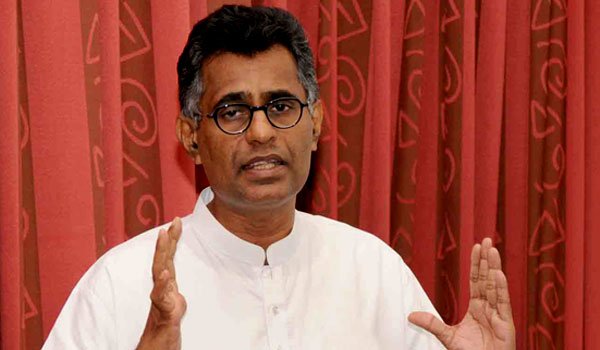Following are excerpts from the interview Ranawaka had with the Daily News:
What is Megapolis and how would such a project help Sri Lanka?
Megapolis is to simply transform the entire western province into a well planned enclave. Architecturally, when the population of a city exceeds five million, it is called a megapolis. A city is 50,000 less and a Super city means 50,000 to 100,000. So the entire population of the Western Province comes to six million at present and is expected to increase to eight million.
Why Megapolis?
According to my knowledge there are three reasons, one being the messy urbanization we experience day by day. We have over 1,000 beggars, over 2,000 stray cattle and 16,000 stray dogs. You have to have a programme to address this problem. There is also the issue concerning slum dwellers and in Colombo alone, there are over 68,000 families, while in the Western Province there are over 100,000 families living in slums and shanties. So the country needs to have proper housing and social mobilization programmes to transform the lives of these slum dwellers to live a quality life in dignity. The growing issue concerning vehicular traffic on Colombo roads also contribute to messy urbanization that we often experience. In 1950, Sri Lanka's entire motor fleet consisted of nearly 5,000. During September 2015 alone, 60,000 new vehicles were imported, which means at least 2,000 new vehicles are inducted on to roads. Now our vehicle fleet consists to about five million! Mobility is less than 12 km per hour when it should be over 20 km while the economic burden grows heavy. Traffic and fuel losses adds up to about Rs. 1 Billion per day, while the economic impact which is approximately 14 percent at present, is estimated to reach 25 percent by 2020. If we do not address this grave problem which is presently turning into a social problem, it would soon turn into an economic crisis. Added to these problems, the growing issue of housing for the middle class, the garbage management issue, pollution and flood problems are the results of the messy urbanisation we are attempting to address through this programme.
The next reason is the achieving of high income levels. Although there have been many discussions relating to the eradication of poverty and increasing of income, nothing has so far been achieved. To achieve this, there has to be a proper urban planning and a proper spatial structure.
Thirdly, to develop the new techno economic conditions in the country, which the world is at present experiencing, there should be a good investor friendly country with low cost labour and good regulations. Even our own investors are reaching out to other countries, so that strategy too would not work. The new strategy is to develop the technical side; which is the fourth industrial revolution, driven by technology. Megapolis is based on economic prosperity, social justice, environmental sustainability and people's quality of life.
What is the difference between this project and other projects launched by the previous government?
This is a historic approach. We would be working as part of a large plan. Taking Port City as an example, we are not building the port city as planned by the previous administration. We are planning a Marine City while the Port City is planned as part of it. We will not be engaging in projects which are not economically viable. Take for example the floating market, it has added an aesthetic quality to the city, but failed as an economically viable project. It is not just a beautification project, but a complete spatial structure.
"We will not be engaged in what I call, cleaning up the living room without putting the kitchen and the toilet in order. If they stink or are messy, then there is no point in having the living room beautiful. That was what the last government did, only make up for Colombo."
What will happen to the projects that were started by the last government and are they on-going now?
We are now engaged in a spatial zoning system based on an environmental assessment. We have been engaged in this strategic environment assessment so that we would be able to identify environmentally sensitive areas such as wetlands. We will develop a zoning system to mark residential zones and economic zones similar zones. Then, we will be able to incorporate these projects into the structure plan. "We will try to somehow harmonize the ongoing projects into this structure plan. Some will be included, while some rejected and some reconciled with our new concepts. We will ask the rejected projects to change their scope, for instance we have asked the port city to change their scope."
For example, our structure plan has a marine city, an aero city in Katunayaka area, a logistics city in the Wattala area, the Central Business District from Pettah to Slave Island and to Kollupitiya, a tech city in Homagama and Malabe areas, two industrial cities in Horana and Meerigama, two tourist cities in Negombo and Beruwala, a plantation city in Avissawella, a Green City in Baduraliya Sinharaja area and the Administration City in Sri Jayewardenepura.
People are afraid it would be forced on them. What assurance could you give?
We will always follow the discussion approach. No involuntary resettlement would be carried out. Development would be participatory, no one would be removed by force.
However, we would not tolerate encroachment and illegal settlements in future. Those who are already in would not be removed, but the government would not tolerate fresh attempts in future.
There have been instances in the past where roads and other infrastructure development were halted due to the influence of politicians. We would not tolerate such attempts.
People expect immediate benefits from these projects such as transport. How possible would it be?
That is something difficult to achieve, but we plan to provide some short term and midterm benefits to the people. Take transport issue for example, the transport issue had been growing over some time. We do plan to provide some solutions by 2020. During every project, there would be some people who would have to be relocated or displaced and the government would provide solutions to that. You have to remember that the benefits are much greater and have a positive impact on a much larger community than those who are negatively impacted initially. The Mahaweli project is a classic example.
What are the overall plans of implementation?
We have not yet established the Megapolis Authority as a legal entity, but we only have the project office. The first phase was to design the structural plan and the design, which we have completed. The next phase is to establish the Megapolis Authority as a legal entity and get the approval for the authority and the master plan by the Parliament, which is yet to materialize. We have already prepared the legal documents. This would be presented to Parliament during the first half of this year.
The third phase is its implementation, to have investment briefings and lobby for investments. We are doing these as parallel activities, we have already started lobbying for investments through entities such as the Transport Ministry.
-Chathuri Dissanayake
(Daily News)






